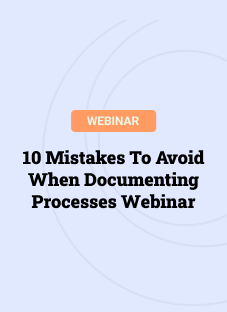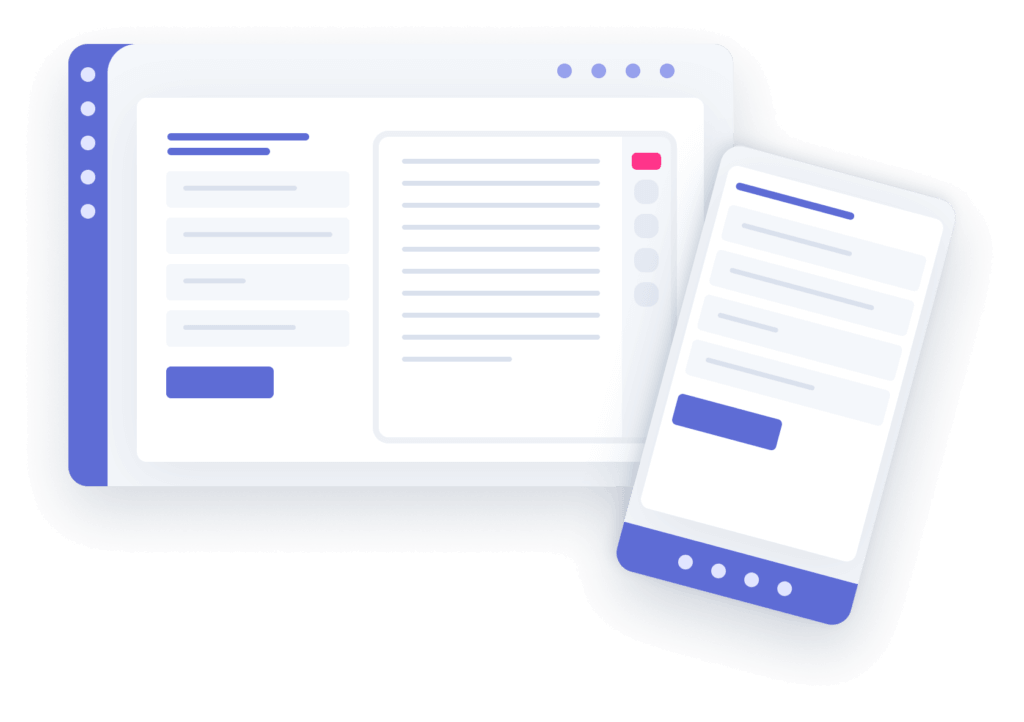Welcoming new hires into the company is a big deal!
Great employee onboarding programs will not only make new employees feel welcomed and determine how long they stay but it will also impact the company’s growth.
Employee onboarding directly affects employees’ performance, retention, and relationship-building. For instance, an effective onboarding that leaves them feeling prepared can increase their productivity by up to 34% (eLearning).
As such, curating a great onboarding program is crucial.
4 Common gaps in the onboarding process for employees
1. Complex onboarding programs 😒
Excessive paperwork, information overload, and too many manual processes make onboarding complicated and it can overwhelm new employees. Thus, complex onboarding programs are one of the major risks that HR professionals must watch out for, seeing as a bad onboarding experience can influence the duration and tenure of a new team member.
This is why one key risk management technique that most competent HR departments commonly implement is to simplify the onboarding process.
Achieve this is by
- Sending new hires any necessary forms prior to the onboarding day. So paperwork won’t take up too much time and they can do it online, it should be sent virtually.
- Automating the onboarding process through technology like Whale.
- Creating an employee handbook that contains the company procedures and benefits but also inspires new team members to live the mission. This will serve as their reference as they navigate their first day, saving time in the process.
- Immediately register new hires with an automated payroll service to streamline the process and ensure a smooth initial payday.
Even though onboarding is an important process, it doesn’t have to be too complex. It’s important not to overwhelm new hires who may already be feeling nervous.
2. Technology knowledge gaps 🖥️
Every company uses employee onboarding software and programs in its own way. Even if it’s a well-known program like Google Sheets, the company may have its own unique way of using the program. Additionally, the company may have its own internal company software. Therefore, technology training must not be overlooked during onboarding and creating SOPs will optimize working efficiency.
One strategy to help a new employee adapt to new technology is through
- Guided learning on Whale.
- You can also conduct a side-by-side and step-by-step process of using programs so they can get a feel of it (or you could simply create a video in Whale with step-by-step instructions).
Giving team members access to software ahead of time will create familiarity with the company’s technology stack and save time, getting them ready to start work.
3. No company culture introduction 💔

Company culture refers to how a company and its employees work and behave together. It’s something that’s already established, so new employees will need to be incorporated into this culture. This is crucial because employees are 50% less likely to quit when they feel a strong sense of belonging within the company.
During onboarding,
- Introduce new team members to regular and unique practices in the company, such as L10 meetings and choose-a-song Friday (check out our Whale playlist for Fridays on Spotify).
- Invite team members to informally meet other team members (even those they won’t directly work with) to get a sense of what the culture is like. It gives them a chance to know everyone else’s roles and who they can approach in times of need.
This will go a long way to making them feel part of the team already.
4. Lack of continuous communication 🤐
The onboarding process shouldn’t end after their first day or week.
Checking in with new hires and their progress is a must, so any issues or difficulties are resolved immediately.
- Check new team members’ learning progress in Whale and
- Set up one-on-one’s to get a feel for how they’re experiencing the environment and if there are questions.
Let them know that they can always reach out for help from colleagues and the team.
Continuous communication not only provides new employees with a smoother onboarding experience but also prevents any problems from progressing into worse situations as they begin their roles.
Other common mistakes in employee onboarding
In our time working with companies, we’ve seen a few examples of bad employee onboarding. If it’s not through mal intention but rather through lack of time.
Common onboarding mistakes in onboarding include;
- Waiting until the first day to start onboarding (Hint – this is too late!)
- Giving a half-hearted or lack luster welcome
- Not setting expectations and not fulfilling promises made to new employees
- Over-managing the onboarding process, hindering learning
- Giving negative feedback from the get-go or assuming one direction feedback without asking the new hire for their opinion
- Offering inconsistent and unhelpful information
- Assuming rather than understanding new hire needs
- Ignoring generational differences in onboarding
- Initiating onboarding without support for the new hire
- Overwhelming new hires without adequate support

FAQs about gaps in onboarding processes
How can you prevent gaps in your onboarding processes?
To prevent gaps in their onboarding processes, businesses can employ various tools, resources, and strategies designed to streamline the integration of new hires into their operations.
These include;
1. Utilizing Comprehensive Onboarding Software
- Onboarding software like Whale provides structured and customizable onboarding checklists, ensuring that all necessary steps are taken from legal documentation to social integration.
- Project management tools such as Asana, or Airtable can track onboarding tasks, deadlines, and responsibilities, ensuring nothing is missed.
2. Developing a Structured Onboarding Plan
- Pre-Onboarding Activities: Engage employees before their start date through emails, providing them with information about the company culture, expectations, and first-day logistics.
- Structured Timeline: Have a clear onboarding timeline that spans over the first 90 days, including scheduled check-ins, training sessions, and feedback loops.
3. Focusing on Clear Communication and Documentation
- Welcome Packs: Provide clear documentation on job roles, responsibilities, company policies, benefits, and any necessary paperwork.
- Mentoring Programs: Assign new hires a mentor or buddy for guidance, which can help in closing any informational or cultural gaps.
4. Implementing Feedback Mechanisms
- Regular Check-ins: Schedule regular one-on-one meetings to discuss progress, challenges, and feedback. This can help identify any gaps in the onboarding process early on.
- Surveys and Questionnaires: Use tools like SurveyMonkey or Google Forms to gather feedback on the onboarding experience, identifying areas for improvement.
5. Ensuring Continuous Learning and Development Opportunities
- Learning Management Systems (LMS): Platforms like Whale can provide ongoing training and development opportunities, ensuring employees have the resources they need to succeed.
- Workshops and Training Sessions: Organize regular training sessions on both hard and soft skills relevant to the employees’ roles and the company’s industry.
6. Fostering a Welcoming Company Culture
- Social Integration Events: Facilitate social events, team-building activities, or informal meetups to integrate new hires into the team and company culture.
- Open Door Policy: Encourage an environment where new employees feel comfortable asking questions or expressing concerns.
What tools or resources are available to help companies prevent gaps in their onboarding procedures?
- Onboarding Software: Platforms like Whale and BambooHR streamline the onboarding process by automating administrative tasks, ensuring compliance, and providing new hires with a centralized place to complete forms, learn about the company culture, and understand their role.
Learning Management Systems (LMS): Tools such as Whale and LinkedIn Learning offer a structured way for new employees to undergo necessary training, from company policies to job-specific skills, tracking their progress along the way.
Digital Checklists: Applications like Officient help in creating structured onboarding tasks for both the new hire and the team involved in the onboarding process. These checklists ensure that no critical step is missed.
Internal Communication Tools: Slack facilitates communication among team members, allowing new hires to ask questions, seek help, and integrate into the team more easily.
Feedback and Survey Tools: Platforms like SurveyMonkey and Google Forms can be used to gather feedback from new employees throughout the onboarding process, identifying areas for improvement and ensuring their needs are met.
What strategies can organizations employ to avoid gaps during onboarding?
- Pre-boarding Activities: Engage new hires before their first day by providing them with information about the company culture, expectations, and what they can expect during their first week. This can include sending company swag, setting up their email account, or even a welcome from the CEO.
Structured Training Plan: Develop a comprehensive training plan that includes both general orientation and role-specific training. Ensure it is flexible enough to cater to the individual learning pace of new employees.
Assign a Buddy or Mentor: Pairing new hires with a more experienced employee can help them navigate the company culture, answer questions, and provide support, making the onboarding process more personal and less overwhelming.
Regular Check-Ins: Schedule regular one-on-one meetings between the new hire and their manager or HR to discuss progress, address concerns, and adjust the onboarding process as needed. This helps in identifying and filling gaps early on.
Cultural Integration: Make efforts to integrate new hires into the company culture through team-building activities, company-wide events, or informal meet-and-greets. This helps them feel part of the team and understand the company’s values and expectations.
Continuous Improvement: Utilize feedback from new employees to continuously refine and improve the onboarding process. Identify trends in feedback to make necessary adjustments, ensuring the process remains effective and engaging.
Bottom line?
Onboarding matters and poor impressions last!
Onboarding is the first thing a new team member will experience upon joining the company. Make their transition an effective process by avoiding these common gaps in employee onboarding programs and welcoming them with a great experience.
Want to give new hires everything they need to succeed and perform?
Check out;
_____________________
Exclusively written for Whale by JBeckinsale

10 Mistakes in documenting your processes webinar
Do you want to know how easy it is to grow your business just by documenting your processes? Get free access to this webinar and presentation now.







